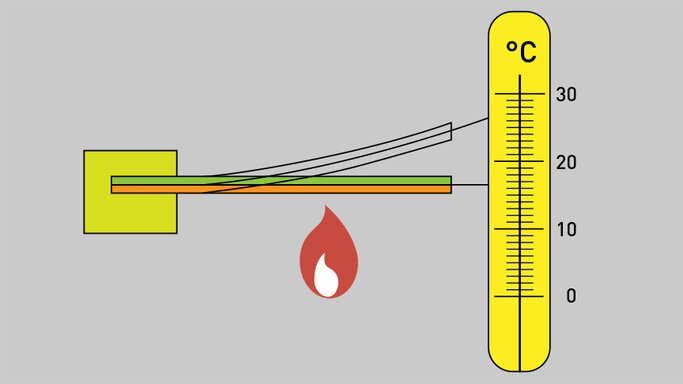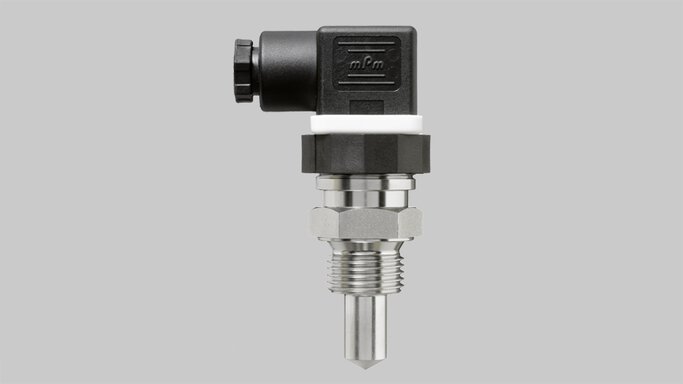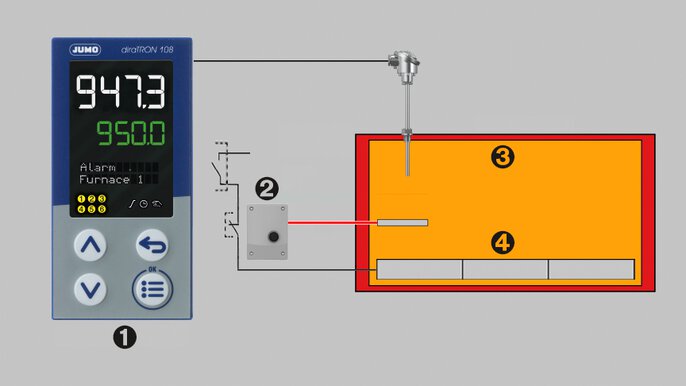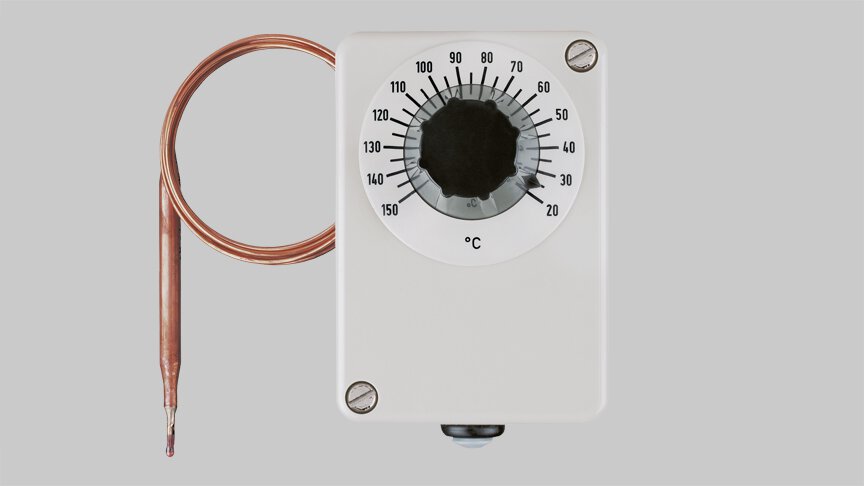
Understanding temperature switches - technology and areas of application
Temperature switches are used millions of times in temperature control and monitoring in industrial and domestic applications. These indispensable components therefore make a significant contribution to the efficiency and safety of systems. Find out more about how they work, the different types and the wide range of applications for temperature switches.
Table of contents
What does a temperature switch do?
Temperature switches are designed to control and monitor temperatures in various systems and applications. They switch an electrical contact when a certain temperature is exceeded or undershot, thereby preventing overheating or ensuring sufficient heating.
What is the principle behind mechanical temperature switches?
This article deals with mechanical temperature switches that utilize the expansion of metals, liquids or gases. As the temperature rises, the substances in a temperature switch continue to expand until a switching contact is actuated when a defined temperature is reached. Switching currents of 10 A or more are no problem for most temperature switches. Small heaters can be controlled directly, for larger systems an actuator such as a power contactor must be used. Mechanical temperature switches are also passive switches and therefore do not require a supply voltage.
What are electronic temperature switches?
Electronic temperature switches are also available on the market. These measure the temperature with a resistance thermometer and evaluate its signal electronically. The switching point can be set using the keypad, for example, and they can be equipped with a display. The temperature can often be output via a standard signal (e.g. 4 to 20 mA).

Electronic temperature switch
What is the switching hysteresis?
The switching point (or switching temperature) of a temperature switch is the temperature at which a contact is opened as the temperature rises, thus switching off a heater. The switching point is fixed for some switches, but can also be freely set for other versions. In addition, the temperature switches have a so-called lower switching point (also known as reset point/switch back point), i.e. the temperature at which the contact is closed again as the process cools down. The temperature difference between the two switching points is the switching hysteresis or reset value/switch back value.
What is the difference between a temperature switch and a temperature controller?
A very precise control result is achieved with temperature controllers. These measure the temperature with a temperature sensor and, as PID controllers, they regulate the temperature exactly to the setpoint. In the case of binary control, precise regulation is possible by changing the switch-on time of the actuator. For example, the heating output can be varied from 0 to 10 kW.
In contrast, temperature switches are assigned to the discontinuous two-point controllers - the process temperature fluctuates with them around the setpoint. In many applications, such temperature fluctuations are acceptable, meaning that temperature switches can be used to create a very robust temperature control system with low cost.
How do bimetal temperature switches work?
As the name suggests, a bimetal is used in bimetal switches. The two metals (e.g. copper and nickel) rolled onto each other have different expansion coefficients. As the temperature rises, the metals expand to different degrees, causing a deflection and a contact to open (NC) or close (NO).
Bimetal switches in an industrial environment have a very compact design and are usually screwed into the process like a sensor. Their switching point is fixed during production. They are also very resistant to vibration - a vibration resistance of up to 10 g is not uncommon. The switches are connected in the direction of the evaluation system via a connecting cable. Temperature switches with a bimetal are used in compressors, for example - they switch off the compressor in the event of overtemperature or start an active cooling system (e.g. a fan).

Function of a bimetal switch, green = nickel, orange = copper

Bimetal switch
How do gas or liquid-filled temperature switches work?
This type of temperature switch is usually referred to as a thermostat and consists of a sensor filled with a gas or liquid that is placed in the process. If the temperature at the sensor rises, the system pressure increases. As the sensor is connected to the membrane via the capillary line, the same pressure is generated in the membrane. The membrane expands and a snap-action switch is triggered. The inner diameter of the capillary line is typically 0.2 mm - for comparison: the thickness of a human hair is up to 0.1 mm.
The sensor and the thermostat housing are connected to each other via the capillary line. Maximum capillary line lengths of up to 5 m can be regarded as practical. The switching point can usually be set on the housing.
The illustration shows a temperature switch for controlling the room temperature. In this version, the capillary is only routed to a spiral sensor, which is located directly on the thermostat housing.

Function of a gas or liquid-filled sensor

Surface-mounted thermostat for wall mounting
In which applications are temperature switches also used?
In many cases, for example, a compact controller regulates the process temperature, which is measured by an electrical thermometer. A setpoint value is set on the controller so that the temperature in the process is controlled exactly to the setpoint value by activating the heater accordingly via the controller output. A temperature switch also measures the temperature and switches the heating off at a limit temperature (e.g. 1000 °C).
A temperature that is too high can be caused by a technical defect or incorrect operation. There are systems for which the described switch-off is mandatory. Examples are heat transfer oil systems or grain dryers. Often, however, it is simply a matter of common sense to protect the goods to be treated or the system from overheating by switching it off to prevent damage.

Application with temperature switch and temperature controller – (1) Temperature controller, (2) Temperature switch, (3) Industrial oven, (4) Heater
A temperature that is too high can be caused by a technical defect or incorrect operation. There are systems for which the described switch-off is mandatory. Examples are heat transfer oil systems or grain dryers. Often, however, it is simply a matter of common sense to protect the plant or the treated goods from destructive overheating.
How do thermostats differ in terms of setpoint specification and switching behavior?
In the case of temperature switches for control, a simple setpoint specification can be made - usually via a rotary knob. These components are known as temperature controllers.
Temperature switches for switching off at a defined limit temperature are called temperature monitors. With these temperature switches, the setpoint can usually only be set using a tool.
There are also temperature switches for switch-off for which a reset must be carried out. If the contact was opened due to an excess temperature, it does not close automatically when the temperature returns to the good range. A reset button must also be pressed.These so-called temperature limiters are often used in unmonitored systems where there are no technical personnel on site.
Temperature monitors and limiters are normally equipped with an additional safety function and are then referred to as safety temperature monitors or safety temperature limiters.
- ${title}${badge}





